Red sunflowers are a unique and stunning variation of the traditional yellow sunflower. They feature vibrant red or mahogany red petals and dark center disk. These Sunflowers can be grown for both commercial and ornamental purposes.
Just like the traditional sunflowers, when it comes to incorporating red sunflowers into any garden or floral arrangements, the possibilities are endless. They can be planted on their own, or mixed and matched with other sunflowers or flowering plants.
Despite red sunflowers being a relatively new addition to the sunflower family, these sunflowers have quickly become popular among gardeners and flower enthusiasts alike.
In this article, I will give a look at different types, cultivation, and care of red sunflowers, as well as their various uses and benefits.
Types of Red or Burgundy-red Sunflowers
- Chianti Sunflower
- Ruby Eclipse
- Moulin Rouge
- Prado Red
- Red Sun
- Russian Sun
- Italian Red Sun
Chianti Sunflower
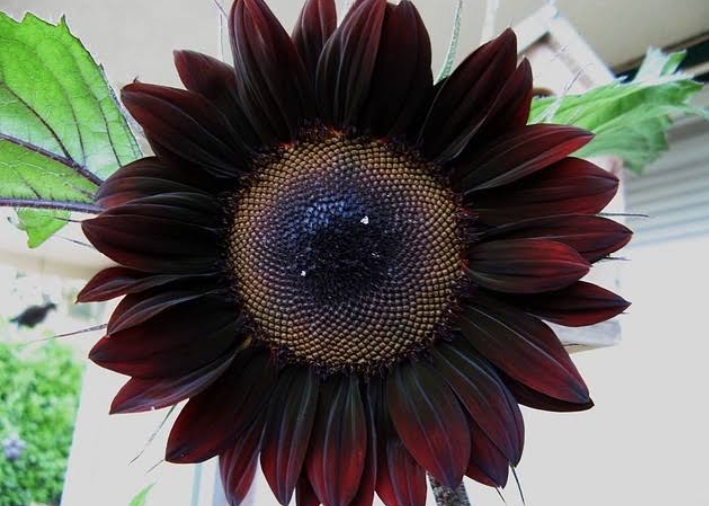
Chianti Sunflower has wine-red velvet petals with dark center disk. It grows to a height of 4 to 6 feet. The bright red petals of the Chianti Sunflower and its dark center disk provides an attractive contrast especially when growing together with the yellow sunflowers.
Chianti plant prefer full sun and well-draining soil, and should be planted in the spring. In many places, it is grown as an annual, but in warmer climates, it may be grown as a perennial.
Ruby Eclipse

Ruby Eclipse Sunflower is bicolored with velvety petals. It is one of the fastest flowering varieties, blooms in as early as 50 days from seed, well before most other sunflowers in the same height range.
The cream-colored, pollen-free flowers have dark faces and ruby red central rings that vary in width, fading into the petal tips as flowers mature.
It produces large, velvety blooms with deep ruby-red petals surrounding a dark center disk. The Ruby Eclipse Sunflower grows to a height of 2 to 4 feet.
The flowers generally can be used to add color or contrast to garden beds or borders. This sunflower variety is drought tolerance and resistance to pests and diseases.
Moulin Rouge
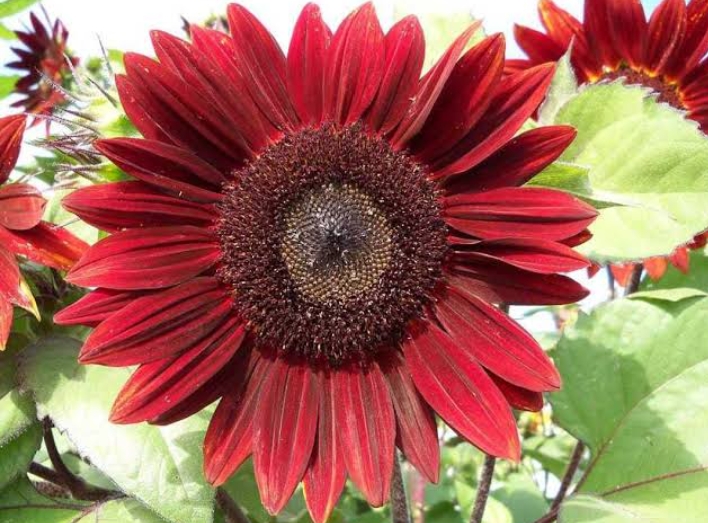
Moulin Rouge is a hybrid variety of Sunflower that produces pollen free flowers. It bears beautiful dark red or burgundy red blooms with a dark brown centre.
The sunflower grows to a height of 3 to 5 feet, Its large, single blooms can reach up to 8 inches in diameter.
Moulin Rouge sunflowers are among one of the easiest plants to establish from fresh flower seeds. They don’t take very long to germinate, they need little to no care, and aren’t too picky on soil conditions.
This sunflower can be used for gardens, landscapes and cut flower arrangements.
Prado Red Sunflower
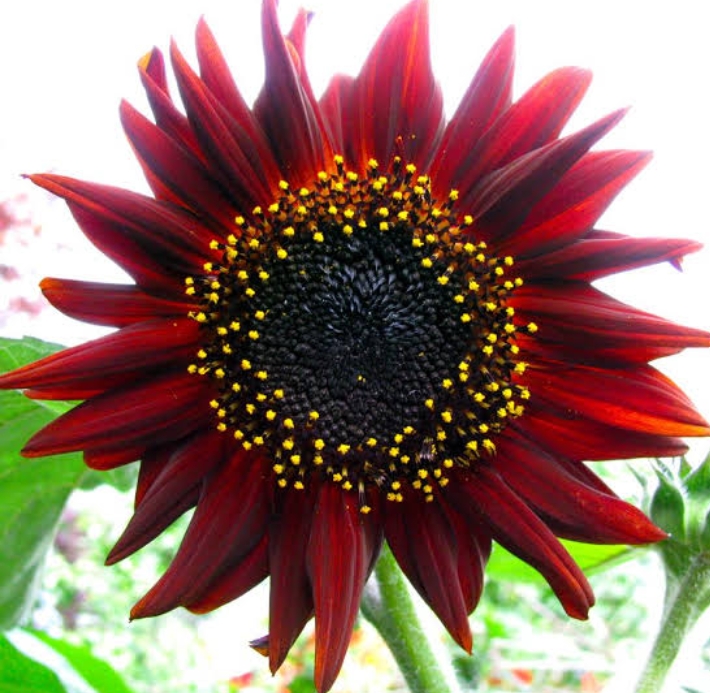
The Prado Red sunflower has been bred for use as a cut flower. It is a multi-headed, early flowering plant that bears a single large flower head initially, followed by branching, each with a smaller but identical bloom.
The flower is of various shades of mahogany-red, with a golden halo surrounding the dark centre. The Prado Red Sunflower grows to a height of 3 to 4 feet. Its large, single blooms can reach up to 6 inches in diameter.
Categorized as an annual flowering plant, Prado Red Sunflowers will grow quickly from freshly harvested seeds. The plants will produce stems, leaves and then flowers, all within a single growing season. When the cooler temperatures of the late Autumn season arrive, your sunflowers will begin to wilt.
Red Sun sunflower
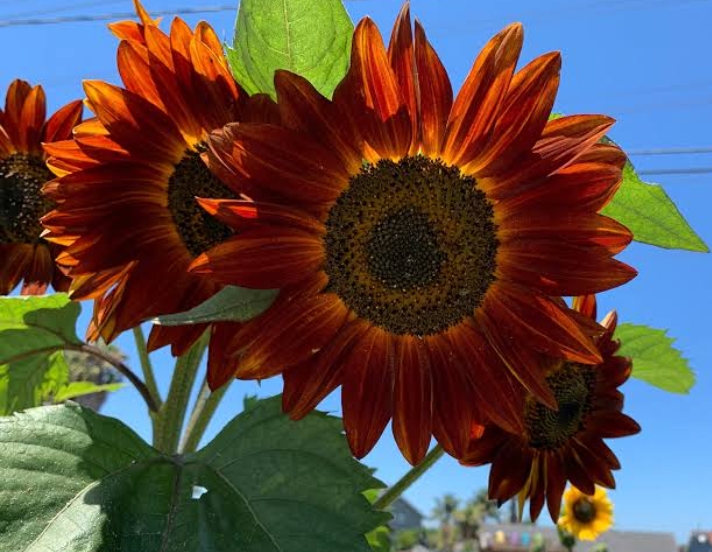
Red Sun sunflower features mahogany red petals accented with a dark brown center with a visible ring of yellow color .
It is a popular variety among sunflower gardeners especially in Russia and Ukraine due to its unique coloration and large size. These sunflowers can grow up to 4 or 6 feet tall and have blooms that can reach up to 12 inches in diameter.
Red Sun sunflowers are known for their drought tolerance and ability to attract pollinators, such as bees and butterflies, to the garden. Red Sun sunflowers are planted in the spring and can be grown in a variety of soil types, but prefer well-draining soil and full sun.
Red Sun displays up to 10 gorgeous flowers per plant, and will attract all sorts of beneficial insects to the garden as well. Some of these insects include butterflies, bumblebees, honeybees and hummingbirds.
Russian Sun sunflower
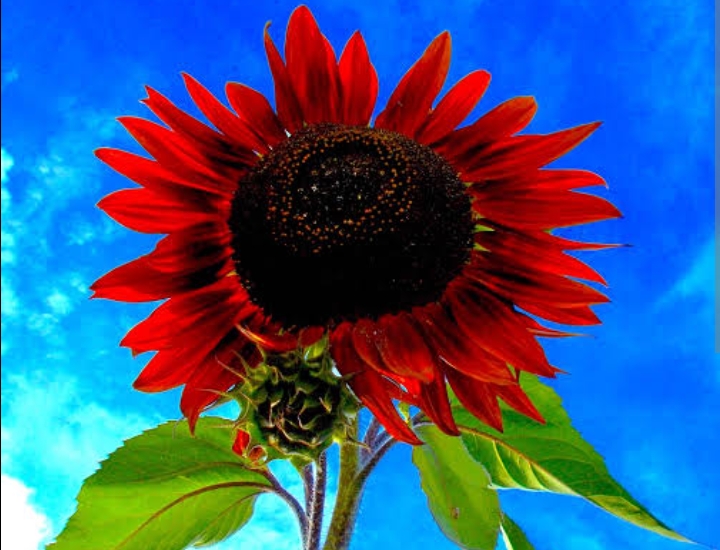
Russian Sun sunflower can grow up to 6-8 feet tall and have blooms that can reach up to 12 inches in diameter. They are very good for used in honey or fruit farms because of their ability to attract pollinators, such as bees to the garden.
Russian Sun sunflowers are drought tolerant and will do well in areas with low rainfall. They also have a long blooming season, which can last from mid-summer to fall, providing long-lasting color in the garden. It is easy to grow and maintain because it is drought-tolerant and resistant to pests and diseases.
Russian Sun sunflowers is not well-documented, but it is a variety that was developed in Russia. It is likely that the unique coloring and large size of Russian Sun sunflowers were developed through selective breeding and hybridization, rather than being found in wild sunflower populations.
Italian Red Sun
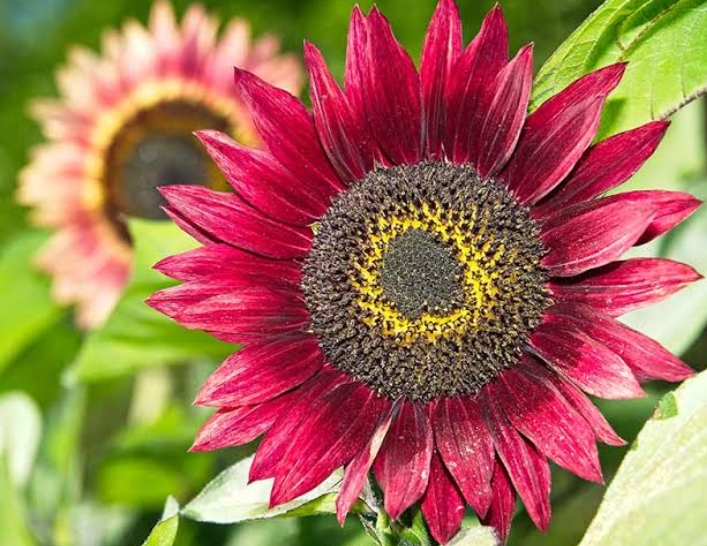
Italian Red Sun was developed in Italy and is relatively large size with bright, bold red petals. They can grow up to 4-6 feet tall and have blooms that can reach up to 12 inches in diameter.
They are generally a good variety due to their drought tolerance and ability to attract pollinators, such as bees and butterflies to the garden.
Italian Red Sun sunflowers are relatively easy to grow and care for. They prefer full sun and well-draining soil, and should be planted in the spring. They are grown as annuals, but in warmer climates, they may be grown as perennials.
The Right Time To Grow Red Sunflowers
The process of growing red sunflowers is just the the same as growing the normal yellow sunflowers, but timing is key to achieving the best results in this regard. Here are some tips on the best time to grow red sunflowers:
- If you’re starting your red sunflowers from seeds, it’s best to do so indoors in late winter or early spring. This allows you to control the environment and provides a head start on the growing season.
- Once the risk of frost has passed and temperatures have stabilized, you can transplant your seedlings outdoors. This will probably be in late spring to early summer.
- Red sunflowers are best suited to warm climates with plenty of sun. If you live in a cooler area, it may be best to wait until the hottest part of the summer to plant your sunflowers, as they need a warm soil temperature to thrive.
- In most climates, red sunflowers will be in full bloom by mid to late summer. You can extend the growing season by planting a variety with different blooming times such as the Russian Red or Prado Red.
Planting the Red Sunflowers
Planting red sunflowers is a straightforward process for anyone including the beginners and experienced gardeners. Here are some tips to help you successfully plant red sunflowers:
- Red sunflowers need full sun to grow, so choose a location that gets at least 6 hours of direct sun per day. They are also relatively drought-tolerant, but it’s important to ensure that the soil drains well to avoid root rot.
- Before planting, loosen the soil to a depth of at least 6 inches and mix in a balanced fertilizer. Sunflowers prefer fertile, well-draining soil, so amend the soil as necessary to improve drainage and fertility.
- When planting red sunflowers, the top of the root ball should be level with the soil surface. Space your sunflowers about 18 to 24 inches apart, as they will grow tall and need room to spread out.
- Red sunflowers are heavy bloomers and can grow quite tall, so be sure to provide support in the form of stakes or cages. This will help keep your sunflowers upright and prevent damage to the stems and blooms.
- Once planted, water your sunflowers well.
Care For Red Sunflowers
To grow healthy and vibrant red sunflowers, it’s important to provide proper care. Here are some tips to help you give your red sunflowers the best care possible:
- Red sunflowers are relatively drought-tolerant, but they still need consistent watering to grow strong and healthy. Water your sunflowers regularly, especially during dry spells, and be sure to water deeply to encourage deep roots.
- Fertilize your sunflowers every 2-4 weeks with a balanced, water-soluble fertilizer to provide them with the nutrients they need to grow strong and healthy.
- Red sunflowers can be susceptible to pests such as aphids, cutworms, and spider mites. Regularly inspect your sunflowers for pests and use an organic or chemical pesticide as needed to keep pests under control.
- As red sunflowers grow tall and heavy, it’s important to provide support in the form of stakes or cages to prevent damage to the stems and blooms.
- Regularly removing spent blooms, a process known as deadheading, will encourage your sunflowers to produce more blooms and will also keep your garden looking neat and tidy.
Cutting Red Sunflowers For Bouquets
Cutting red sunflowers for bouquets is a great way to enjoy their vibrant blooms indoors. Here are some tips to help you successfully cut red sunflowers for bouquets:
- The best time to cut sunflowers is in the morning, after the dew has dried but before the heat of the day has set in. This will help your sunflowers last longer in the vase.
- Use sharp, clean pruning shears or scissors to make a clean cut just above a leaf node. Avoid crushing or bruising the stem, as this can reduce the life of your sunflowers.
- Cut sunflowers at a length that is suitable for your vase and the intended display. Usually, sunflowers are cut at a length of 10-18 inches, but this can vary depending on the size of the blooms and the vase.
- Once cut, immediately place the sunflowers in a bucket of water and let them hydrate for at least an hour before arranging them in a vase. This will help them last longer and reduce the risk of wilting.
- When arranging your sunflowers in a vase, be sure to mix in other flowers and foliage for interest and balance. Sunflowers can be the centerpiece of a bouquet or used to add height and structure.
Harvesting Red Sunflower Seeds
- Wait until the back of the sunflower head turns yellow and the petals have withered, indicating that the seeds are mature and ready to be harvested.
- Cut the stem of the sunflower head using pruning shears, leaving a few inches of stem attached to the head.
- Hang the sunflower heads in a dry and well-ventilated area for a few days to allow the seeds to fully mature and the moisture content to reduce.
- Hold the sunflower head over a container and gently shake it to remove the seeds. Alternatively, you can use a threshing tool to separate the seeds from the head.
- Remove any remaining bits of stem and petals from the seeds.
- Spread the seeds out on a tray and let them dry for another day or two to ensure that all moisture has been removed.
- Store the dried seeds in an airtight container in a cool, dry place to keep them fresh and prevent insect or fungal infestations.